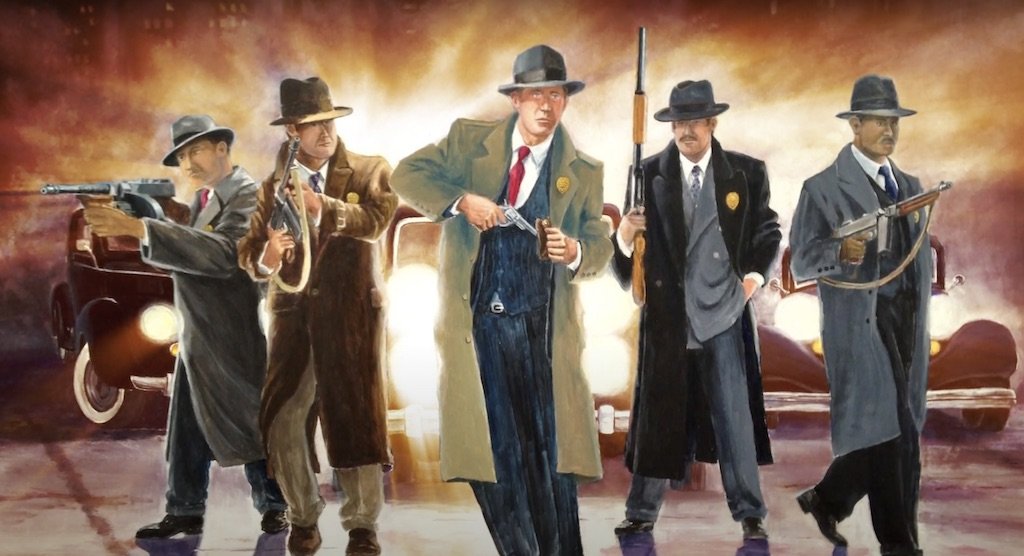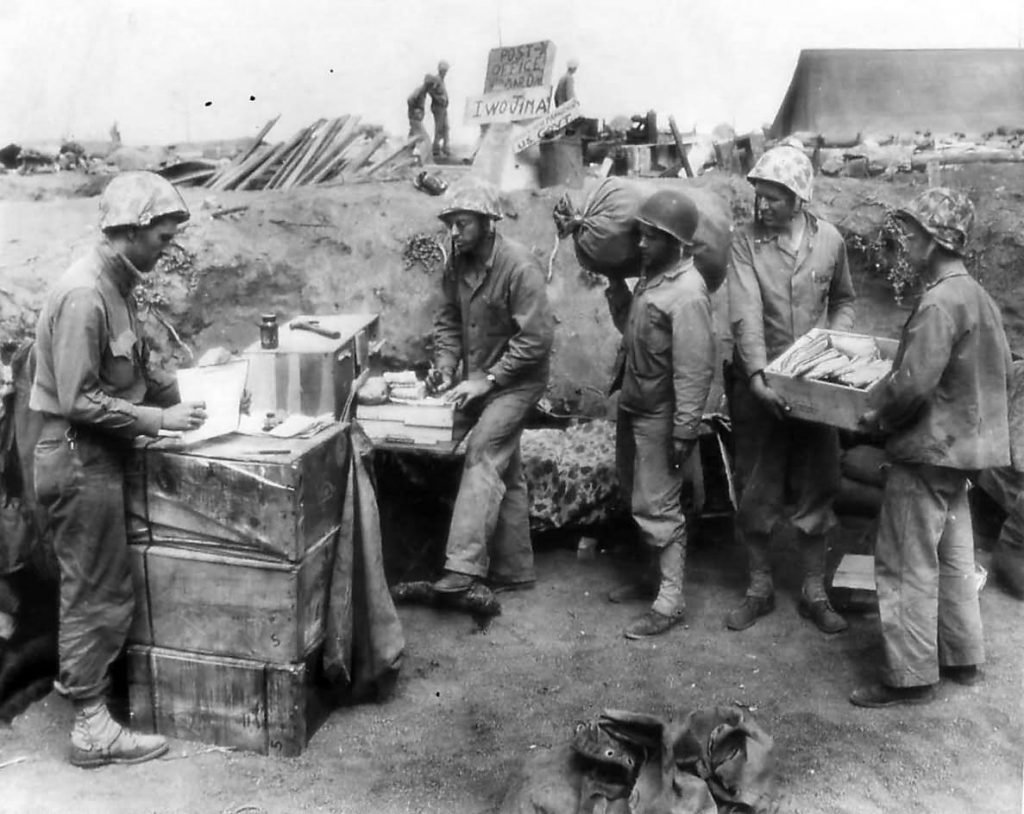The US Postal Inspection Service: America’s First and Oldest Federal Law Enforcement Agency

The U.S. Postal Inspection Service were among the first federal agents to be equipped with Thompson submachine guns. Screengrab from YouTube
Before the FBI or any other federal law enforcement agency locked criminals behind bars in the United States, the most important crime fighting squad was the US Postal Inspection Service. From the 18th century to present day, surveyors, special agents, and inspectors investigated the nation’s most newsworthy crimes. They investigated mail train robberies committed by notorious outlaw “Billy the Kid,” were amongst the first federal law enforcement officers to carry the Thompson submachine gun (commonly known as the “Tommy Gun”) to fight 1920s mobsters, and even had an integral role in capturing Ted Kaczynski, sensationalized in the media as the “Unabomber,” bringing an end to one of the most sophisticated criminal manhunts in US history.
The US Postal Inspection Service is the most storied federal law enforcement agency in the country, and since widespread crime is often connected by mail, their jurisdiction to investigate any related crime from anywhere around the world is unrestricted. This freedom began from one of America’s Founding Fathers, and since its establishment, the agency has participated in the largest criminal investigations of each century.

In 1737, Benjamin Franklin, the newspaper printer known for historic contributions to the nation, was also appointed by the British Crown as postmaster of Philadelphia. In addition to his day job, he had duties and responsibilities to regulate and survey post offices and post roads. As the first Postmaster General under continental Congress, Franklin abolished the British practice that determined which newspapers traveled freely in the mail and established foundational mandates of the “surveyor” position to ensure the organization could grow beyond a one-man show.
Franklin recognized the task was too much to handle alone and appointed William Goddard as the first surveyor of the new American Postal Service. His first day in office — Aug. 7, 1775 — became known as the birth of the Postal Inspection Service. The surveyors investigated thefts of mail or postal funds committed by writers, innkeepers, and others with access to the mail or post offices. The frequency of mail crimes became such a nuisance, Congress approved the death penalty as a viable punishment to enforce the serious offenses.
At the turn of the 19th century, surveyors became known as special agents, and among the first three was Noah Webster, the man responsible for compiling the dictionary. During the War of 1812, special agents observed and reported activities of the British Fleet along the Potomac River, and during the 1840s and 1850s, their roles magnified to coexist with western expansion in the United States. Special agents were needed across Texas, Oregon, and California to ensure new postal services were completed, as well as to keep order amongst mail carriers on horseback, railroads, or traveling by steamboats or stagecoaches.

Following the American Civil War, Congress imposed two new statutes still in use today. The first was the Mail Fraud Statute of 1872, which enforced a crackdown against swindles including the infamous “snake oil salesman” or the “scalp tonic salesman.” The second was the Postal Obscenity Statute of 1873, which made it illegal for anyone to “to sell, give away, or possess an obscene book, pamphlet, picture, drawing, or advertisement.” Special agents assumed the name of “Post Office Inspectors” in 1880 to differentiate from other special agents privately employed by railroad and stagecoach companies.
During the 20th century is when the US Postal Inspection Service earned its reputation for bringing down the hammer on gangs, mobsters, and armed robbers. The most scandalous criminal outfit was the organized secret society operating in New York City known as the Black Hand. They terrorized the public, the police force, and especially Italian immigrants, all frequent targets of murder, extortion, assassination, child kidnapping, and bombings. The bombing attacks were so frequent that the police referred to the Italian neighborhood as “The Bomb Zone.” Police reports indicated that there were more than 100 bombings in 1913 alone.
The Black Hand wrote menacing letters to their victims. “De Camilli, from one of our secret spies, we have learned that you have informed the police, contrary to our warnings,” Salvatore Lima, the Black Hand’s leader wrote. “Therefore, it is time to die. And on the first occasion, you will feel a bullet in your stomach, coward. You have willed it, and you will die like a dog. The terrible Black Hand.”
Post Office Inspector Frank Oldfield tracked 14 members of the Black Hand and nabbed and convicted the vicious and violent gang by targeting their paper trail through the mail. Elmer Irey, one of the great detectives of the 20th century and former post office inspector, used similar methods to nab Chicago Outfit’s Al Capone through tax fraud. Post office inspectors also captured and convicted Charles Ponzi — the mastermind and father behind the infamous pyramid “Ponzi Scheme” — and brought Gerald Chapman — America’s first “Public Enemy Number One” — to justice. After a three-year manhunt, forensic science put away the DeAutremont brothers, a trio who used dynamite to blow open mail train cars to scoop the cash inside.
Inspectors were also instrumental in the delivery and protection of over $15 billion worth of gold transported along the “Yellow Brick Road” from New York City to Fort Knox, Kentucky, to establish the Fort Knox Bullion Depository in 1937. During World War II, 247 post office inspectors helped create Army Post Offices (APOs) and Fleet Post Offices (FPOs). Through their efforts, soldiers, airmen, sailors, and Marines could communicate with their loved ones back home. This system remains in effect to this day.
Later in the century, as their investigations adapted with the times, they received newer challenges through the security of commercial aircraft and the threats of mail package bombs aboard airplanes. In 1963, Postal Inspector Harry Holmes interviewed Lee Harvey Oswald to investigate the mail-order rifle he used to assassinate President John F. Kennedy. Only minutes after Oswald left Holmes’ office, he was gunned down — furthering the conspiracy theories of suspected involvement.

The Postal Inspection Service remains just as important today as when it was created, and with the increase in funding in other federal agencies, their prestige has emboldened their legacy as more than what was once perceived as “The Silent Service.” Days after the Sept. 11, 2001, terrorist attacks, the Silent Service investigated the Anthrax biohazard letter attack — the worst biological attack in US history — and has since increased their efforts against illegal drug trafficking, suspicious mail, mail and package theft, money laundering, cybercrime, and child exploitation.
In the 1920s, Charles Ponzi scammed his investors out of an estimated $20 million during his time as a conman and swindler — some 90 years later, just as the Postal Inspector Service had before, they nabbed Allen Stanford, a fraudster who convinced investors to buy certificates of deposit from his offshore Stanford International Bank with the promise of high returns. Stanford’s two-decade-long, $7 billion Ponzi scheme was discovered through exhaustive investigations by a task force comprised of the IRS, the FBI, and the Silent Service. Stanford was convicted in 2012 and sentenced to serve 110 years in prison.
As long as there is mail to be delivered, there are inspectors who stand ready to ensure the safety of the American citizens.

Matt Fratus is a history staff writer for Coffee or Die. He prides himself on uncovering the most fascinating tales of history by sharing them through any means of engaging storytelling. He writes for his micro-blog @LateNightHistory on Instagram, where he shares the story behind the image. He is also the host of the Late Night History podcast. When not writing about history, Matt enjoys volunteering for One More Wave and rooting for Boston sports teams.
BRCC and Bad Moon Print Press team up for an exclusive, limited-edition T-shirt design!
BRCC partners with Team Room Design for an exclusive T-shirt release!
Thirty Seconds Out has partnered with BRCC for an exclusive shirt design invoking the God of Winter.
Lucas O'Hara of Grizzly Forge has teamed up with BRCC for a badass, exclusive Shirt Club T-shirt design featuring his most popular knife and tiomahawk.
Coffee or Die sits down with one of the graphic designers behind Black Rifle Coffee's signature look and vibe.
Biden will award the Medal of Honor to a Vietnam War Army helicopter pilot who risked his life to save a reconnaissance team from almost certain death.
Ever wonder how much Jack Mandaville would f*ck sh*t up if he went back in time? The American Revolution didn't even see him coming.
A nearly 200-year-old West Point time capsule that at first appeared to yield little more than dust contains hidden treasure, the US Military Academy said.












